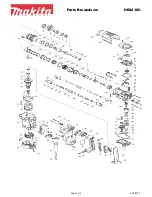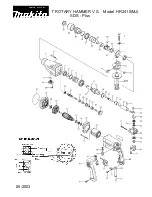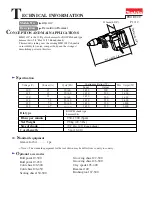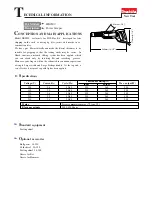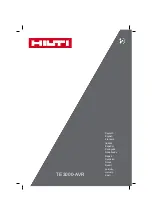
6
5.1. Connect the wrench to the air hose as in Section 3.
5.2. Fit the socket onto the square drive and then place the socket over the subject nut.
Squeeze the trigger to operate the wrench.
5.3. To change the ratchet direction turn the switch on the tool head. F = Forward, R = Reverse.
DO NOT
use any additional force upon the wrench in order to remove or tighten a nut.
DO NOT
allow the wrench to run in “idle rotation” for an extended period of time as this will
shorten the life of its bearings.
6. MAINTENANCE
WARNING!
Disconnect the tool from the air supply before changing accessories, servicing or
performing any maintenance. Replace or repair damaged parts.
Use genuine parts only.
Non-authorised parts may be dangerous and will invalidate the warranty.
6.1.
Lubricate the air tool daily with a few drops of air tool oil dripped into the air inlet.
6.2. Impact wrench-
Check and top up the gearbox by removing grub screw located under the
impact head.
6.3.
Clean the tool after use.
6.4. DO NOT
use worn or damaged sockets.
6.5.
Loss of power or erratic action may be due to the following:
a)
Excessive drain on the air line. Moisture or restriction in the air pipe. Incorrect size or
type of hose connectors. To remedy check the air supply and follow instructions in chapter
3.
b
) Grit or gum deposits in the wrench may also reduce performance. If your model has an
air strainer (located in the area of the air inlet), remove the strainer and clean it.
6.6.
When not in use, disconnect from the air supply, clean wrench and store it in a safe,
dry,childproof location.
7.
TROUBLESHOOTING
Most air tool problems occur because humid and/or dirty air gets into the line.Be sure to use an
air filter to get rid of the moisture and minute particles
Oil,either too much or too little,!s another problem area.Make sure the tool is oiled either
manually through the air inlet,or automatically with the in-line oiler as depicted in the above
diagram.










